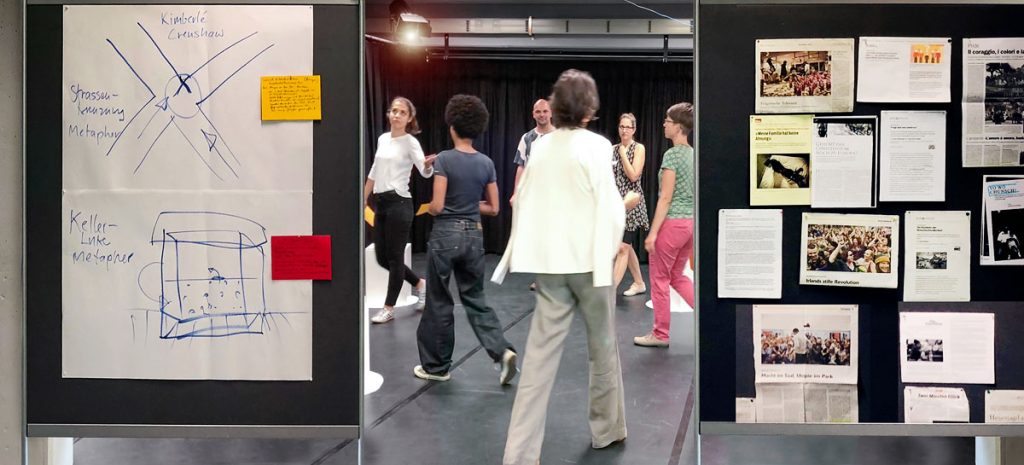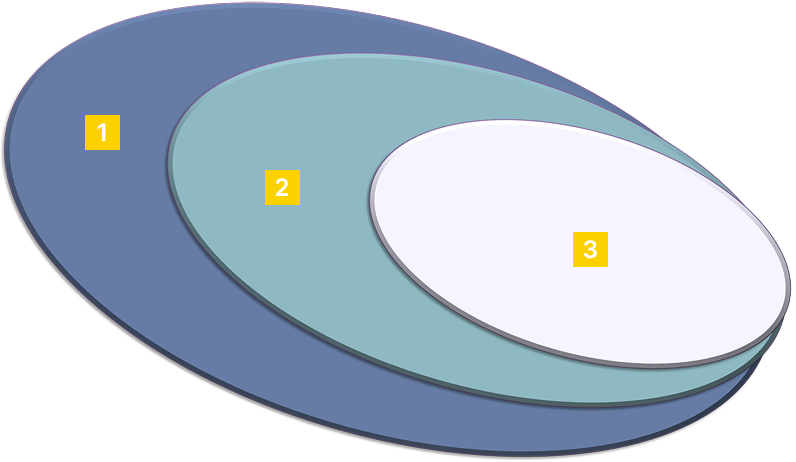Doing Diversity!
An extension of the project Heterogeneity and university teaching and learning (2017-2021)

Against the backdrop of demographic developments, technological changes in the world of work, increasing internationalisation and global migration movements, universities are increasingly recognising different educational biographies, diverse life situations and plural living conditions of their students and staff as the new normal. These new diversities pose demanding challenges for university teaching aimed at equal opportunities and inclusion; where inclusions are intended, the dangers of new exclusions arise.
The formula “Doing Diversity!” has a threefold connotation in this project:
- If diversity is understood as a given normality, then “Doing Diversity!” means that universities are called upon to diversify their study conditions and structures. Instead of creating tailored measures for minorities, we call for an expansion and multiplication of opportunities.
- “Doing Diversity!” takes into account the diverse demands of activists “Not without us about us”: With this awareness, we try to systematically include actors from the Big 6 (age, gender, disability, race, religion, sexual orientation) as co-experts (see publication Unterbrechen!Durcheinanderbringen! Unterbrechen!).
- “Doing Diversity!” acknowledges that the development of university teaching and learning also needs to address the diversity of the entities of FHNW in regard to their disciplinary logic and function.
At the centre of “Doing Diversity” are so-called “further education ateliers”, in which possibilities for action for diversity-oriented and heterogeneity-sensitive teaching and learning practice are developed, informed by didactics of higher learning and art education practices. Instead of focusing on deficits and assuming that minorities need to adapt, the possibilities are explored and potentials considered to create through adapted and revisited methods and contents a diverse, creative and agile diversity-oriented and heterogeneity-sensitive university teaching and learning environment.
The project design, “Doing Diversity!” starts with an analysis of the university teaching and learning from a diversity perspective in reflection groups. The university lecturers are confronted with questions of social and cultural power relations, attributions and normative assumptions about “others” which also seep into teaching praxis leading to phenomena of inclusion and exclusion. The findings of this awareness process open up new forms of articulation and options for action in dealing with social and cultural diversity on at least three levels of teaching and learning practice at the university:

1. macrodidactic level
The inclusive culture of teaching and learning is reflected in a drive for scouting of talent, the acquisition of diverse first-year students, the expansion of studyability and the opening of access opportunities to the university.
2. mesodidactic level
The inclusive culture of teaching and learning is reflected in the diversification of study structures, the heterogeneity-sensitive organisation of study programmes and the diversity-conscious design of curricula.
3. microdidactic level
The inclusive culture of teaching and learning is reflected in the reduction of the drop-out rate, in the diminishing of barriers and in the increase in opportunities for an inclusive, resource-orientated design of teaching and learning events.
With the “shift from teaching to learning” (Wildt 2007) ), the recognition of social and cultural diversity brings about a change in perspective from a focus on content and lecturers to a focus on skills and students. Instead of creating specific measures for minorities, added value is generated for the FHNW and its universities at micro-, meso- and macrodidactic level.
Outcome
Building on the experiences and findings of the successfully implemented project “Heterogeneity and University Teaching” (FHNW Equal Opportunities Action Plan 2017-2020), which aimed to develop a joint continuing education programme for all FHNW universities on the basis of “Critical Diversity Literacy”, the focus of the present continuing project shifts to taking into account the diversity and heterogeneity of discipline related cultures at the FHNW.
On the one hand, the project aims to strengthen diversity competence in the field of higher education teaching and to raise awareness of diversity as an element of the FHNW culture. At the same time, it also aims to break down barriers and to develop, implement and evaluate diversity-orientated interventions in line with the disciplinary, cultural, structural and content-related characteristics of the participating universities. The broad spectrum of possible interventions includes low-threshold offers, teaching observations, podcasts as well as the creation of more flexible forms of teaching and examinations.
Click here to go to the “further education ateliers”, in which various implementations are discussed: Ateliers